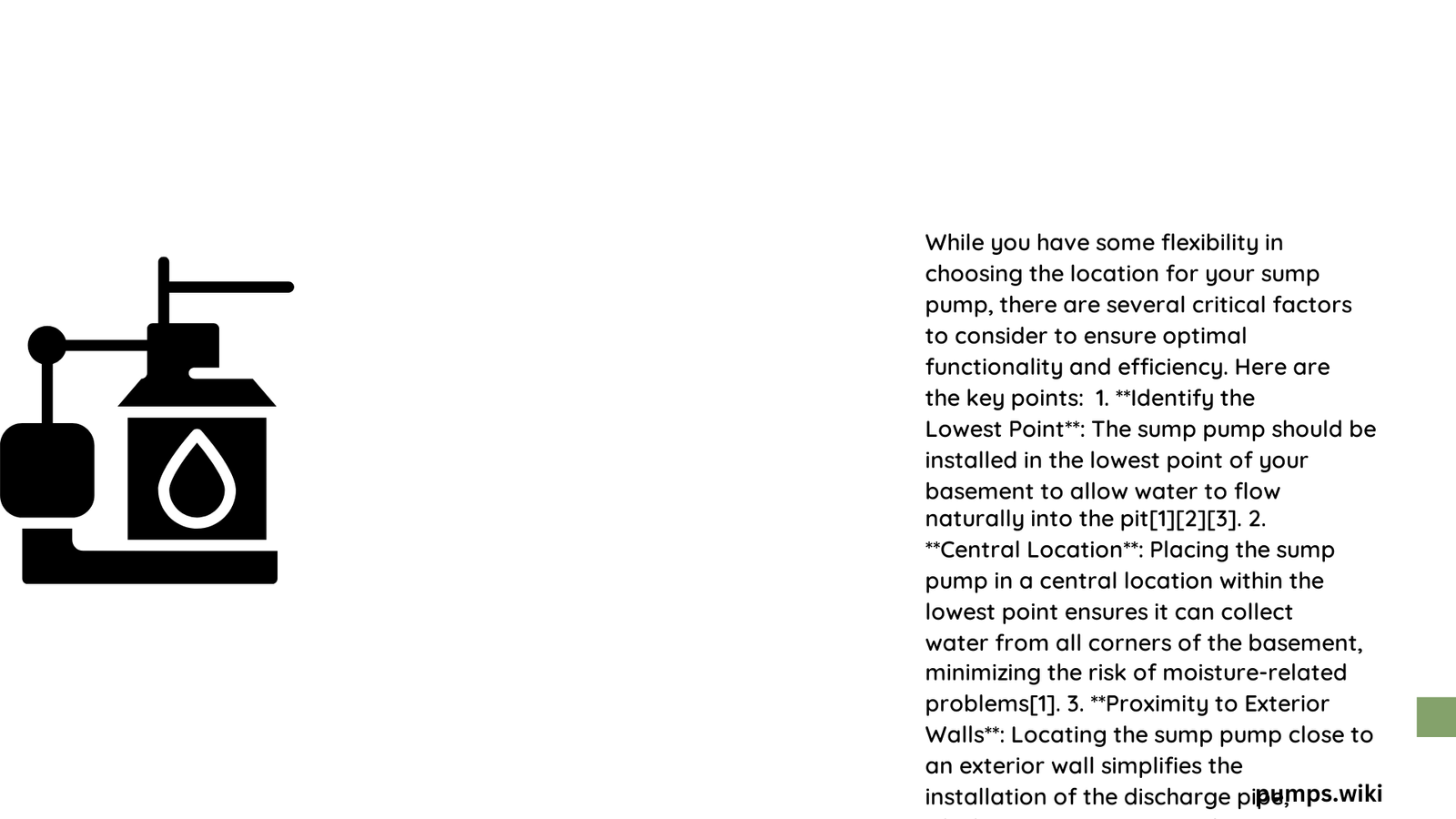Homeowners often wonder about their flexibility in selecting a sump pump location. While you have some input, professional expertise and local building codes significantly influence the final placement. Factors like basement layout, water table, drainage patterns, and structural considerations determine the optimal sump pump installation site, ensuring effective water management and preventing potential water damage.
What Determines Sump Pump Placement Options?
Sump pump placement isn’t a completely free choice but involves strategic considerations that balance homeowner preferences with technical requirements. Understanding these factors helps make an informed decision about your sump pump’s location.
Can Local Building Codes Restrict Sump Pump Location?
Local building codes play a crucial role in sump pump installation. These regulations ensure:
- Safety compliance
- Proper drainage functionality
- Structural integrity protection
| Code Consideration | Impact on Placement |
|---|---|
| Minimum Distance from Walls | 10-18 inches |
| Pit Depth Requirements | 24-36 inches |
| Electrical Circuit Specifications | Dedicated 15-20 amp circuit |
What Are the Primary Placement Criteria?
Selecting a sump pump location involves multiple critical factors:
- Lowest Basement Point
- Water naturally flows to the lowest elevation
- Prevents water accumulation in other areas
-
Maximizes drainage efficiency
-
Proximity to Drainage Systems
- Near perimeter drainage
- Accessible for maintenance
-
Minimizes pipe length
-
Structural Considerations
- Away from load-bearing walls
- Stable ground foundation
- Minimal excavation requirements
How Do Professional Installers Determine Optimal Location?
Professional sump pump installers conduct comprehensive assessments:
- Groundwater mapping
- Soil composition analysis
- Drainage pattern evaluation
- Structural integrity assessment
What Challenges Might Affect Sump Pump Placement?
Several challenges can complicate sump pump installation:
- High water table regions
- Complex basement layouts
- Existing utility infrastructure
- Soil drainage characteristics
Can Homeowners Influence Sump Pump Location?
While professionals guide placement, homeowners can:
- Provide basement layout insights
- Discuss specific drainage concerns
- Request minimal aesthetic disruption
- Understand recommended locations
What Are Potential Placement Risks?
Incorrect sump pump placement can lead to:
- Ineffective water removal
- Potential structural damage
- Increased flood risk
- Higher maintenance costs
Recommended Installation Best Practices

- Consult local building authorities
- Hire certified professional installers
- Obtain necessary permits
- Conduct periodic system inspections
- Maintain proper drainage pathways
Cost Considerations
| Installation Factor | Estimated Cost Range |
|---|---|
| Basic Installation | $500 – $1,500 |
| Complex Installations | $1,500 – $4,000 |
| Additional Drainage Work | $2,000 – $6,000 |
Final Recommendations
While homeowners can provide input, professional expertise remains crucial in determining the most effective sump pump location. Collaborate with experienced professionals to ensure optimal placement and long-term water management.
